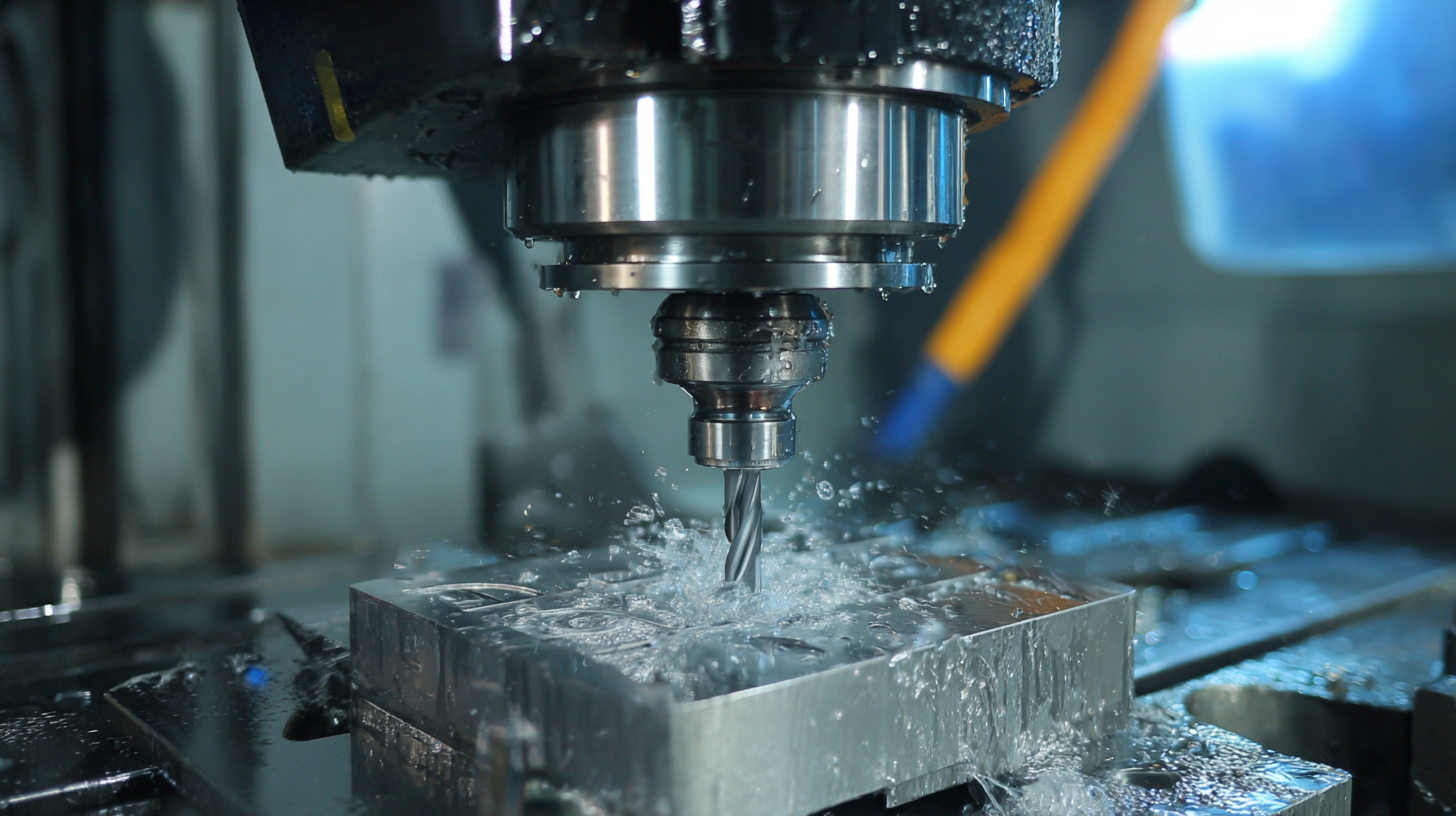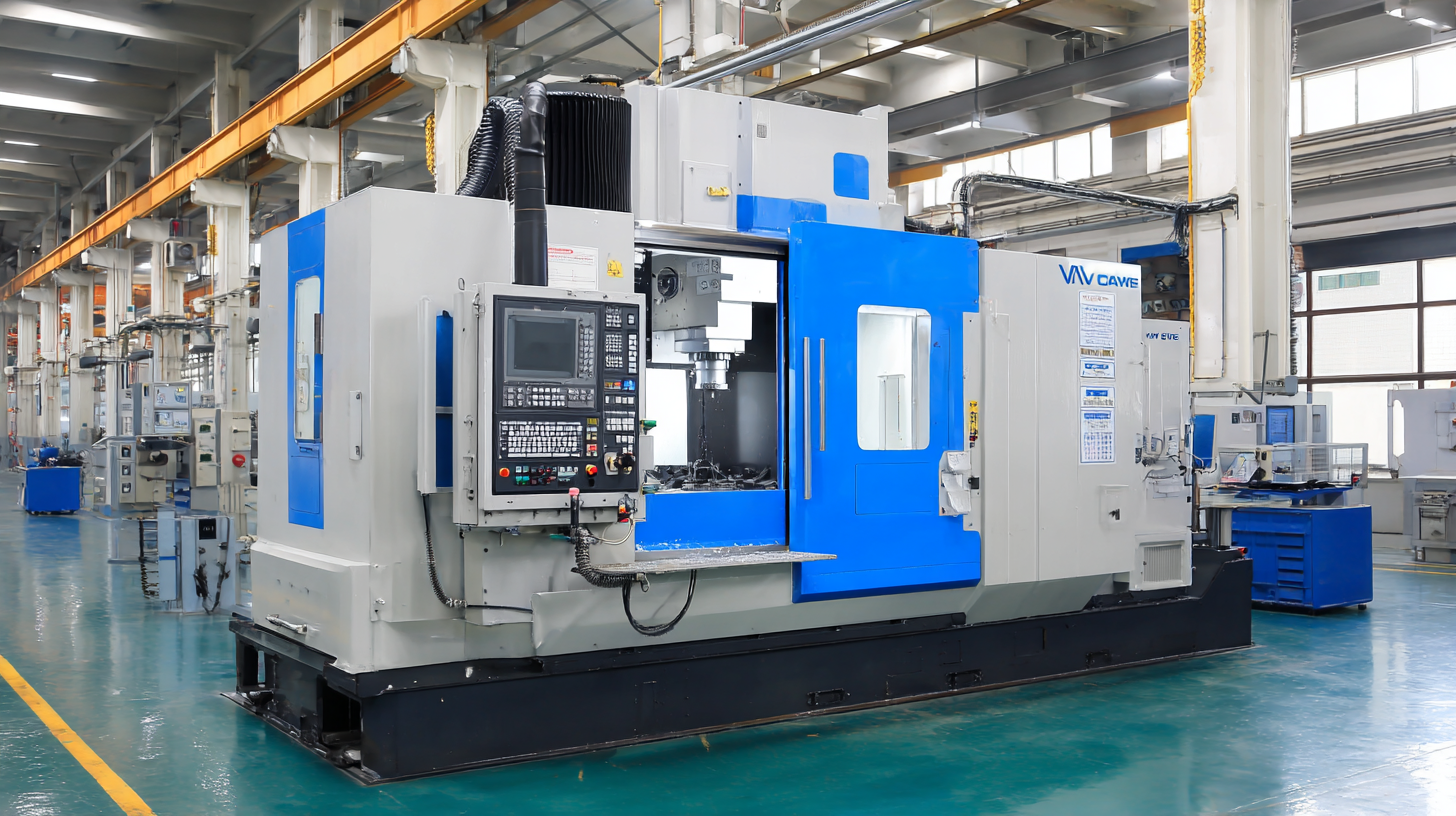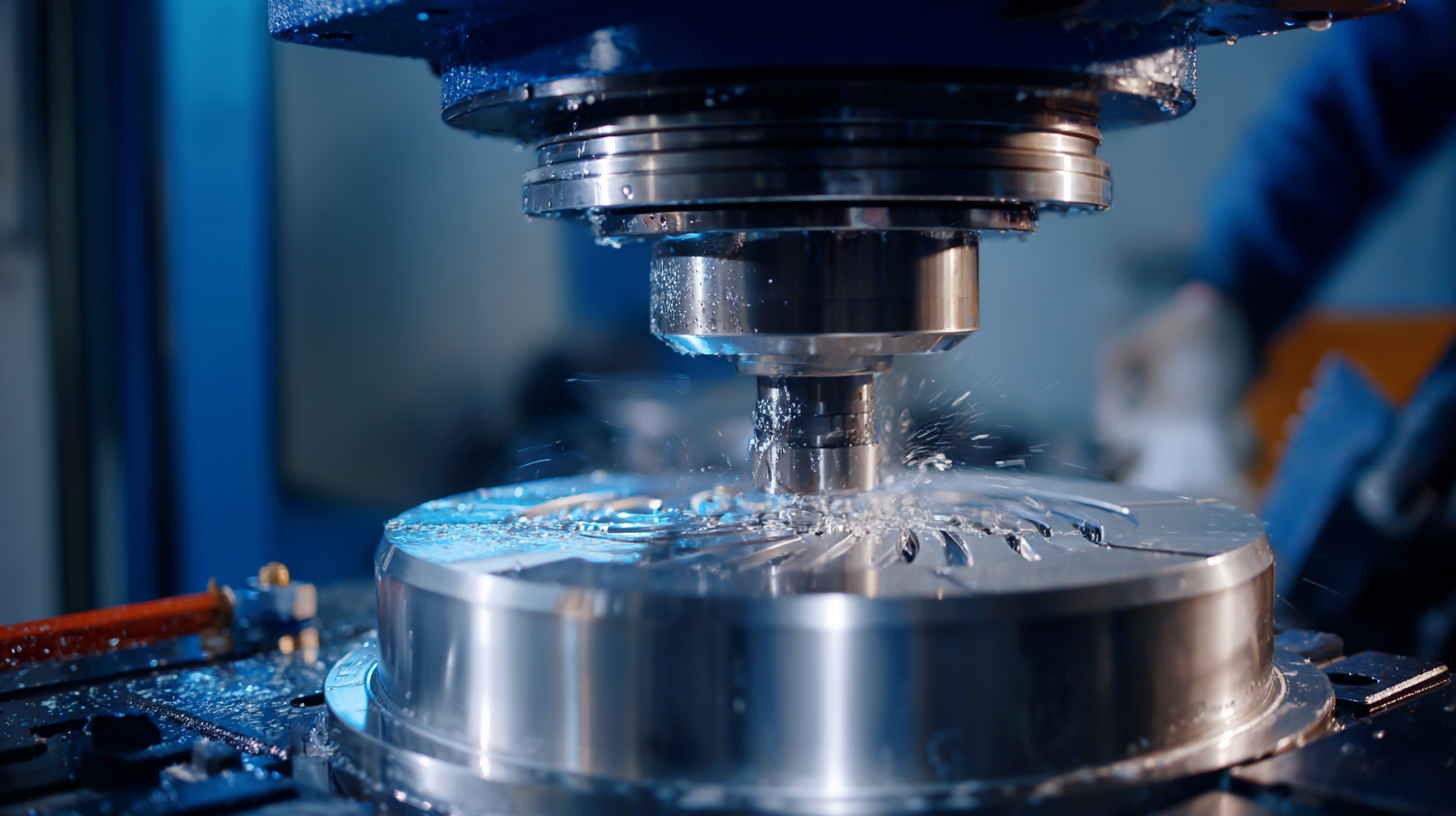Ultimate Guide to Choosing the Best VMC Milling Machine for Your Manufacturing Needs
In the ever-evolving landscape of manufacturing, selecting the right equipment can make a significant difference in productivity and efficiency. Among the myriad of tools available, the VMC milling machine stands out as an essential asset for many industries. As we approach 2025, understanding the latest industry trends and technologies is crucial for making informed decisions. This ultimate guide will delve into the intricate details of VMC milling machines, exploring their features, benefits, and the factors to consider when choosing the best model to meet your unique manufacturing needs. Whether you're a seasoned professional or just starting in the industry, this comprehensive overview will equip you with the knowledge needed to navigate the complexities of VMC milling machine selection, ensuring you stay ahead in a competitive market.

Understanding VMC Milling Machines: Types and Their Unique Characteristics
When it comes to choosing a VMC (Vertical Machining Center) milling machine, understanding the types available and their unique characteristics is essential for meeting specific manufacturing needs. There are several types of VMCs, including standard, high-speed, and multi-axis machines, each designed for various applications. According to a report by Grand View Research, the global CNC machine market is projected to reach $100 billion by 2025, highlighting the critical role of advanced milling technology in modern manufacturing processes.
High-speed VMCs are particularly beneficial for industries requiring precision and efficiency, capable of handling intricate designs with exceptional speed. Meanwhile, multi-axis machines offer unparalleled versatility, enabling users to perform comprehensive operations in a single setup. This drastically reduces lead time and enhances productivity, a crucial factor in today’s competitive market.
**Tips:** When selecting a VMC, consider the machine's spindle speed and feed rate, which significantly impact processing time and finished product quality. Additionally, assess your shop floor space and setup requirements—modern VMCs often integrate advanced automation features, which can further enhance efficiency. Ensuring compatibility with your existing systems can lead to smoother operation and improved output.

Key Factors to Consider When Selecting a VMC Milling Machine
When selecting a VMC milling machine, several key factors should be considered to ensure it meets your manufacturing needs. First and foremost, assess the machine's size and work envelope. Choose a model that can accommodate the dimensions of the parts you typically manufacture. A larger work envelope will provide more flexibility, but it may also require more floor space and a higher investment.
Another crucial factor is the spindle speed and power. Higher spindle speeds are essential for achieving fine surface finishes and reducing cycle times when working with harder materials. Evaluate your specific material requirements and choose a machine that provides the necessary speed and torque for efficient machining.
Tips: Always look for VMC machines with advanced control technology, as it enhances precision and ease of use. Furthermore, consider the machine's maintenance needs—opting for models with lower maintenance requirements can save both time and costs in the long run. Lastly, don’t overlook the importance of after-sales support and service; reliable assistance can significantly impact the overall performance and longevity of your VMC milling machine.
Comparative Analysis: Vertical vs. Horizontal VMCs for Different Manufacturing Needs
When deciding between vertical and horizontal VMCs (Vertical Machining Centers and Horizontal Machining Centers), it's essential to assess your manufacturing needs.
Vertical VMCs are typically preferred for their versatility and ease of use, making them ideal for smaller shops or operations that require frequent setup changes. They excel in machining operations that involve drilling, milling, and tapping, particularly when working with smaller, complex parts. Their vertical orientation allows for greater visibility and easier access to the workpiece, which can enhance operator efficiency and safety.
On the other hand, horizontal VMCs are designed for high-volume production and heavy-duty machining. Their horizontal spindle orientation enables better chip removal and more efficient cooling, making them suitable for larger, heavier workpieces. This design often supports longer tool life and increased accuracy, particularly for intricate components or multi-sided machining. Horizontal VMCs are also well-suited for automated systems, facilitating continuous operation that can significantly boost productivity.
Ultimately, the choice between vertical and horizontal VMCs will depend on the specific requirements of your manufacturing processes, including part size, volume, and complexity.

Exploring the Benefits of High-Speed VMCs in Modern Manufacturing Processes
High-speed Vertical Machining Centers (VMCs) have become an essential component in modern manufacturing processes, providing manufacturers with the precision and efficiency needed to meet today's rigorous demands. According to a report by the Association for Manufacturing Technology, utilizing high-speed VMCs can increase production rates by up to 40%, significantly reducing lead times. This efficiency boosts competitiveness while maintaining high-quality standards. The ability to machine complex parts with tighter tolerances in shorter time frames makes high-speed VMCs invaluable in industries such as aerospace, automotive, and medical devices.
Tip: When considering a high-speed VMC, look for models equipped with advanced features like automated tool changers and high spindle speeds to further enhance productivity. Manufacturers have reported that implementing these features can reduce setup times by an average of 20%, leading to more efficient operations.
Moreover, high-speed VMCs often use advanced materials and tooling technologies that improve both machining speed and accuracy. Data from the National Institute of Standards and Technology indicates that high-speed machining can lead to better surface finishes and lower forces on tools, resulting in longer tool life. This ultimately contributes to reduced operational costs and higher profit margins.
Tip: Always assess the compatibility of your current tools with new VMCs to ensure cost-effective upgrades and avoid unnecessary expenses during transition periods.
Ultimate Guide to Choosing the Best VMC Milling Machine for Your Manufacturing Needs - Exploring the Benefits of High-Speed VMCs in Modern Manufacturing Processes
| Feature | Description | Benefits |
|---|---|---|
| Spindle Speed | High spindle speeds (up to 20,000 RPM) | Increased material removal rates and better surface finishes |
| Rapid Traverse Rates | Fast movement of axes (up to 50 m/min) | Reduced cycle times and improved efficiency |
| Tool Changer Capacity | Automatic tool changers (20-40 tools) | Ability to handle complex jobs with minimal downtime |
| Precision and Accuracy | High precision with minimal tolerance | Consistent quality of manufactured parts |
| Control Systems | Advanced CNC control with user-friendly interfaces | Ease of programming and operation for diverse tasks |
| Size and Footprint | Various sizes to fit different shop layouts | Flexibility in installation and use of limited space |
Customization and Automation: Enhancing Productivity with Advanced VMC Features
In today’s competitive manufacturing landscape, customization and automation are pivotal in maximizing productivity. Advanced vertical machining centers (VMCs) now offer features that allow manufacturers to tailor machines to specific production needs. According to a 2022 report by the Association for Manufacturing Technology, about 68% of manufacturers reported a significant increase in efficiency since integrating customizable VMC features into their operations. These advancements enable businesses to optimize their workflows, reduce downtime, and improve overall product quality.
When considering the implementation of VMCs, here are a couple of tips. First, assess the specific automation capabilities required for your projects. Features such as automatic tool changers and integrated inspection systems can significantly streamline your production processes. Additionally, don’t overlook the importance of software compatibility. A machine that integrates seamlessly with your existing systems allows for smoother operations and better data management.
Moreover, leveraging advanced features like predictive maintenance can prevent costly breakdowns and ensure a steady production flow. According to a report from Deloitte, companies that adopt predictive tools can see maintenance costs reduced by up to 30%. By utilizing these cutting-edge functionalities, manufacturers can not only meet the demands of today’s market but also position themselves for future growth.
